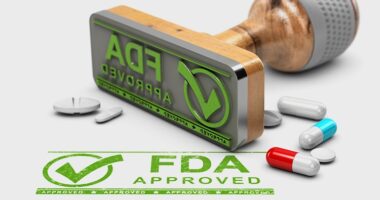The Price Tag for New Drug Development
A recent study by the Tufts Center for the Study of Drug Development estimates the cost of developing a new drug at nearly $2.6 billion.
So what is the cost for new drug development? A recent study by the Tufts Center for the Study of Drug Development estimates the cost of developing a new drug at nearly $2.6 billion, substantially up from the $1-billion plus figure of a decade ago. So what factors are driving these costs? DCAT Value Chain Insights (VCI) examines the cost.
Developing a new prescription medicine that gains marketing approval, a process often lasting longer than a decade, is estimated to cost $2.558 billion, according to a new study by the Tufts Center for the Study of Drug Development. The $2.558 billion figure per approved compound is based on estimated: average out-of-pocket cost of $1.395 billion and time costs (expected returns that investors forego while a drug is in development) of $1.163 billion. The estimated average cost of post-approval R&D—studies to test new indications, new formulations, new dosage strengths and regimens, and to monitor safety and long-term side effects in patients required by the US Food and Drug Administration as a condition of approval– of $312 million boosts the full product lifecycle cost per approved drug to $2.870 million. All figures are expressed in 2013 dollars.
The new analysis, which updates similar Tufts CSDD analyses, was developed from information provided by 10 pharmaceutical companies on 106 randomly selected drugs that were first tested in human subjects anywhere in the world from 1995 to 2007.
“Drug development remains a costly undertaking despite ongoing efforts across the full spectrum of pharmaceutical and biotech companies to rein in growing R&D costs,” said Joseph A. DiMasi, director of economic analysis at Tufts CSDD and principal investigator for the study, in a Tufts CSDD press release. “Because the R&D process is marked by substantial technical risks, with expenditures incurred for many development projects that fail to result in a marketed product, our estimate links the costs of unsuccessful projects to those that are successful in obtaining marketing approval from regulatory authorities.”
In a study published in 2003, Tufts CSDD estimated the cost per approved new drug to be $802 million (in 2000 dollars) for drugs first tested in human subjects from 1983 to 1994, based on average out-of-pocket costs of $403 million and capital costs of $401 million. The $802 million, equal to $1.044 billion in 2013 dollars, indicates that the cost to develop and win marketing approval for a new drug has increased by 145% between the two study periods, or at a compound annual growth rate of 8.5%. According to DiMasi, rising drug development costs have been driven mainly by increases in out-of-pocket costs for individual drugs and higher failure rates for drugs tested in human subjects.
Factors that likely have boosted out-of-pocket clinical costs include increased clinical trial complexity, larger clinical trial sizes, higher cost of inputs from the medical sector used for development, greater focus on targeting chronic and degenerative diseases, changes in protocol design to include efforts to gather health technology assessment information, and testing on comparator drugs to accommodate payer demands for comparative effectiveness data. Lengthening development and approval times were not responsible for driving up development costs, according to DiMasi.
“In fact,” DiMasi said, “changes in the overall time profile for development and regulatory approval phases had a modest moderating effect on the increase in R&D costs. As a result, the time-cost share of total cost declined from approximately 50% in previous studies to 45% for this study.”
The study was authored by DiMasi, Henry G. Grabowski of the Duke University Department of Economics, and Ronald W. Hansen at the Simon Business School at the University of Rochester.






